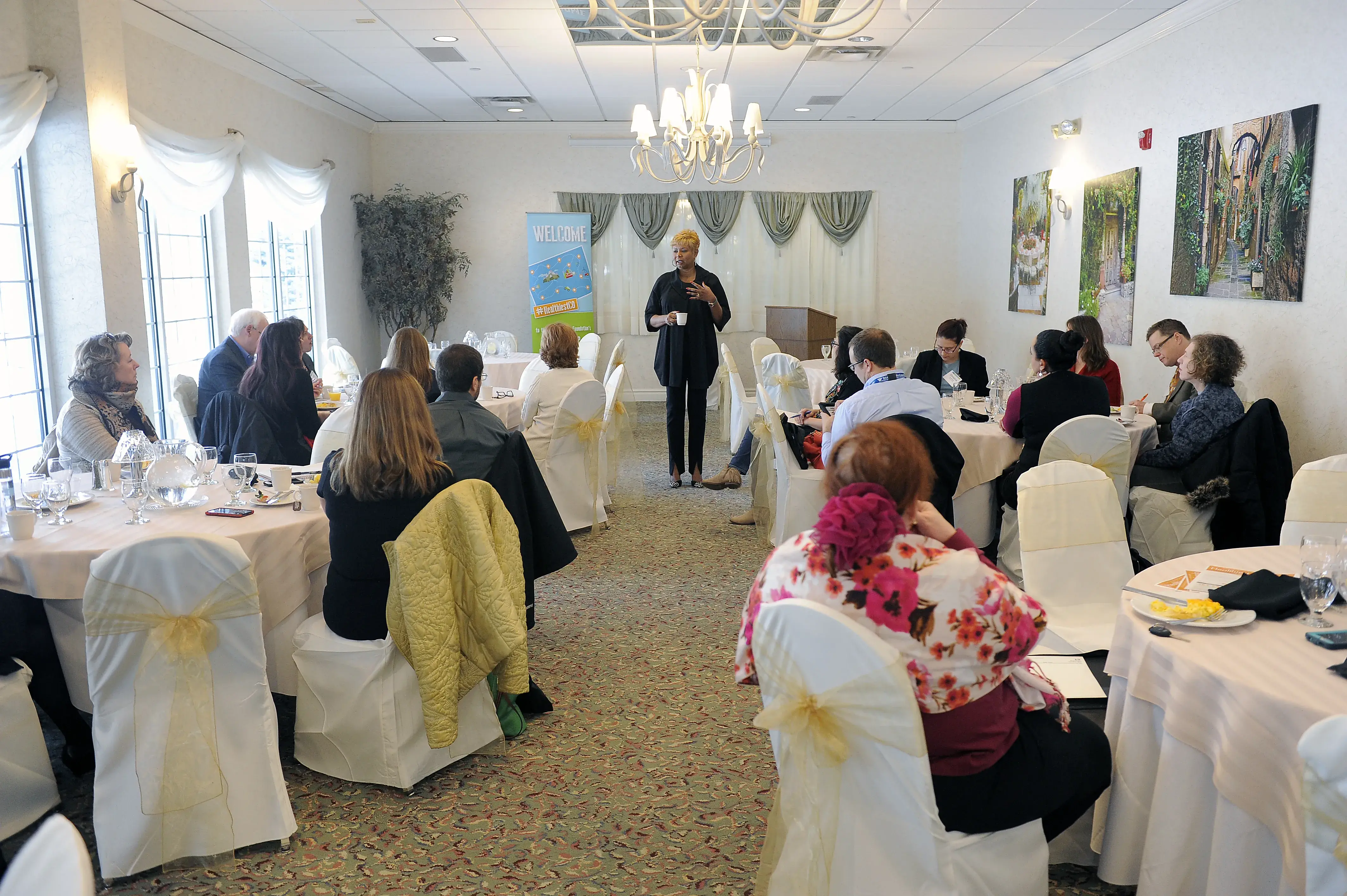After five months of traveling to Colorado communities across the state – urban and suburban, rural and frontier – the #HealthiestCO Statewide Tour finished with three sessions in Denver in early March. Karen welcomed more than 150 community members, at the History Colorado Center and the Wellshire Events Center, including leaders, teachers, advocates and caregivers, who engaged with each other and candidly shared the assets and barriers to health in the Denver metro area.
The robust conversations began with a discussion of Denver’s assets: First on the list, in all three sessions, were Denver’s parks, natural environment and outdoor opportunities. Children have access to parks and recreation center services at no cost, making it easy for many to get outside and get active. The city itself was also described as an asset – with burgeoning bike and transportation infrastructure, proximity to the state legislature, museums and public libraries. Attendees also talked about Denver’s economic recovery, a strong entrepreneurial spirit and sense of innovation.
Good local neighborhood infrastructure translates to strong, connected communities with increasing racial and ethnic diversity. Movements around local food and urban farming are addressing food deserts and making fresh, healthy food available to more people.
In the Denver, residents have access to a strong health care system and provider network, with health coverage gains being made through Medicaid expansion. The region is home to a variety of mental health centers, including a regional crisis center and suicide prevention center. A surveillance system is in place that includes a chronic disease registry and monitoring indicators of better population health, including tobacco use, BMI and other health measures.
Attendees mentioned the city’s strong collaborative spirit as evidenced through collective efforts such as the Mile High Health Alliance and integrated care initiatives. In Denver, There is a sense in Denver that there is a critical mass of nonprofits that work together and support each other. School-based health centers, healthy schools collective impact initiatives and a strong network of early childhood advocates support the health and education of Denver’s youngest residents.
When we asked about barriers to health, we heard again and again, that systems do not have the capacity to care for residents in the new ways they are being asked to: School districts have limited behavioral health personnel; the criminal justice system has inadequate resources to treat substance addiction; behavioral health care providers have three-to-four month-long waiting lists for the homeless population; the disability population has strong advocates, but not enough resources. Attendees also expressed concern about the recent legalization of recreational marijuana, and the lack of education, awareness and regulation around it.
Issues with affordable housing was cited as one of the most significant barriers to health – creating cycles of poverty and displacement and impacting the whole family, especially children. The ripple effect of this housing crisis means that families have less to spend on healthy food or health care, making it even more difficult for families to break the cycle of poor health and poverty.
When families need to access health care, it often isn’t easy. Without a central location to learn about how to access health care, providers without flexible hours, and high public transportation costs, many Denver residents cannot afford the time, cost and effort of accessing health care. Primary care shortages, a lack of specialty providers who take Medicaid and Medicare and the persistent stigma around mental health compound the problem.
Though attendees pointed out that early interventions for young children (up to age 3) are available, the biggest barrier to children’s health is the continuum of care once they are in kindergarten. There is a significant need for wrap-around services for families that include behavioral health, pediatric dentistry, eating disorder treatment, disability programming and general health education.
Achieving stability in existing child health services is a challenge because the early childhood workforce is described as underpaid and under supported, with high turnover and staffing churn. Stabilizing these professionals, through adequate wages and institutional support, would drive continuity of care and prevent behavioral and physical health issues later in life. Attendees also brought up that there are misperceptions about our state when it comes to health – we’re thought to be the healthiest state rates of childhood obesity are on the rise.
Underlying these myriad issues is the need for a paradigm shift when it comes to the understanding of the link between socioeconomic factors – such as poverty and educational attainment – and health outcomes. Linking the two data sets is very complicated, and public health leaders need more granular data to paint the picture of the localized communities.
Though the conversation around health barriers was extensive, the Denver community members continued to come back to the need to convene everyone – funders, the Division of Insurance, state health agencies, insurers, nonprofits and for-profits – around this conversation about health. And most importantly, to talk solutions. The Denver community wants to be heard, needs more general funding for nonprofits and on-the-ground policy work and is looking to funders to share creative and innovative ways of tackling the issues.
As each session wrapped up, the collective feeling was one of solidarity and purpose. The assets in Denver are many, and though the city is facing many challenges as it quickly grows and evolves, there was the recognition that the first step in solving these problems is to give them a voice.

